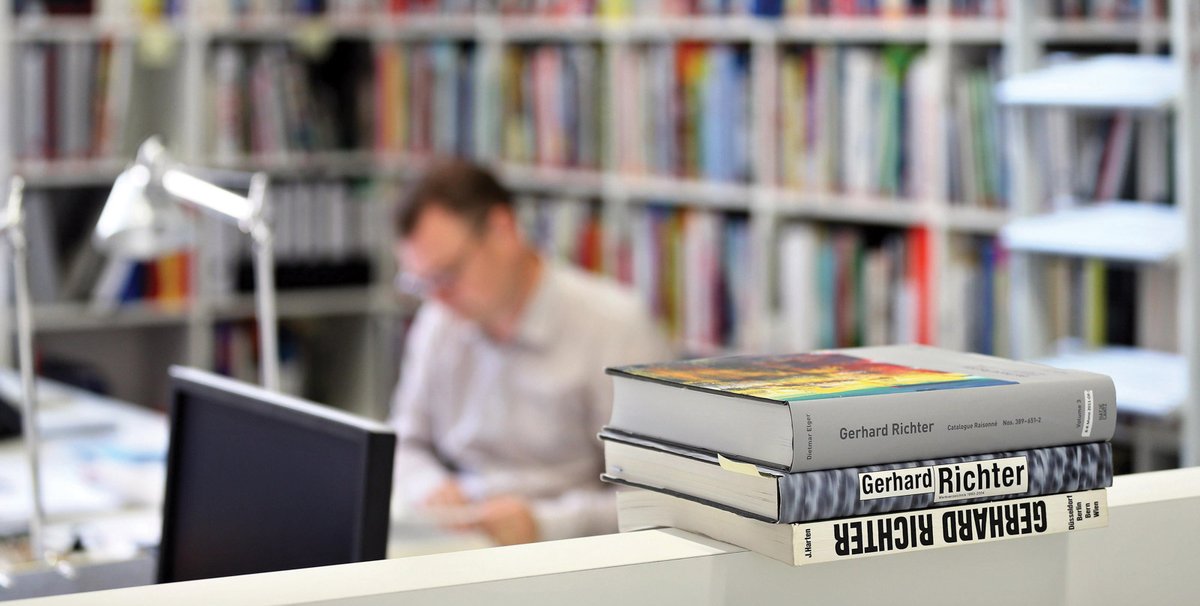Technology has transformed every part of our lives, and never more so than during the Covid-19 pandemic. In the field of catalogues raisonnés, digitalisation has long been trumpeted as the solution to many of the disadvantages of the printed book—among them cost, ability to update (or indeed correct), accessibility and ease of use.
So are we going towards a future in which all catalogues will be digital and the printed book consigned to the scrapheap of history, or is the story far more complex than that?
“Until recently, valuable information harvested through time-consuming and resource-intensive provenance research was often recorded in forms that could be understood by human beings but not by computers,” so says Lynn Rother, professor of Provenance Studies at Leuphana University in Lüneburg. Rother has just been appointed—with a grant from the Volkswagen Foundation—to combine provenance research with data science and will be a panellist at the International Catalogue Raisonné Association’s (ICRA) conference on 3 December.
Joining her on the same panel will be Elizabeth Gorayeb, the executive director of the Wildenstein Plattner Institute in New York. This is a non-profit, private foundation that compiles digital catalogues raisonnés, and Gorayeb notes: “Printed catalogues raisonnés become obsolete or are out-of-date not long after publication. In many instances, there are mistakes that forever undermine their credibility. But a digital catalogue, which can be continually revised with the most up-to-date information, is a much more reliable tool. It can also be accessed on a handheld device and in a remote place, often for free.”
The problem of accessibility was thrown into sharp relief this year when The Art Newspaper’s Anna Brady needed to find a copy of the out-of-print 1953 Giorgio di San Lazzaro catalogue for Modigliani, something that proved extremely difficult during the pandemic lockdown. Libraries and auction houses were closed and she finally found one through a French bookseller, but it took six weeks.

Print archives can be corrupted: John Drewe probably faked as many as 200 pictures, tampering with archive material and duping experts. He was sentenced to six years in prison in 1999 Courtesy of Shutterstock
Digital sceptics
On the other hand, there are what Gorayeb calls “digital catalogue sceptics”. These sceptics are “hesitant to rely on a publication that is subject to change and…are more comfortable with the definitiveness and gravitas of the printed form”. She continues: “The ‘ex cathedra’ finality of a printed catalogue raisonné often serves a valuable purpose, particularly to people who depend on it as a source of justification.”
This view is reinforced by London book dealer Thomas Heneage, whose core business is catalogues raisonnés, monographs and exhibition catalogues. He says many of his clients, most of whom are in the art trade, have misgivings about digital-only catalogues. Heneage cites issues of reliability of information online, mistrust of edit-tracking, the possibility of hacking into a digital catalogue, and even concerns about colour reproductions solely online—“just compare the salerooms’ enhanced images to the real thing!” he says.
At a time when people cannot easily travel to a library, anyone can easily access a catalogue online
Corruption of archives of course also exists in the print world, a famous example being that of John Drewe, who inserted forgeries into museum archives, some of which may still be lurking there.
Nevertheless, the digital catalogue does solve many problems. David Grosz, the president of Artifex Press, which makes digital catalogues, says they have safeguards against hacking: “There are multiple levels for authorised users, levels of access and scrutiny, and everything is timestamped.” And he points to other advantages of the digital version: “It solves the problems connected with recording the work of living artists, and while the cost of research doesn’t change, creation of the publication is much cheaper. A book is read only in one direction and a single artwork appears just once in a printed catalogue, but in a digital one it can appear in multiple chapters, in different ways—by date, subject and so on.”
It turns out, though, that even the computer cannot do everything. Rother notes that numerical data (such as dates or ownership periods) might be entered in the same field as text data – making complex searches impossible. And the data must be solid: “One of the particular challenges faced by almost every expert is how to deal consistently with ambiguous or incomplete dates of ownership.”
Handsome and useful
So it seems there is room in the future for both forms—as “handsome objects” and “useful tools”, to use Gorayeb’s words. “The Covid-19 crisis has further underscored the advantage of this approach to cataloguing,” Grosz says. “At a time when people cannot go into their offices or easily travel to a library containing a rare volume, anyone can easily access a catalogue that lives online. There’s every reason to think this method of creating and reading catalogues will only grow more prominent.” But even he admits that “paper copies will always exist, because people still like books”.
• This article was produced in partnership with the International Catalogue Raisonné Association (ICRA). The Art Newspaper is the official media partner for the 2020 Annual Conference of the International Catalogue Raisonné Association (ICRA) on 3 December. The theme of the online event is Provenance and the Catalogue Raisonné. More details can be found online at icra.art




